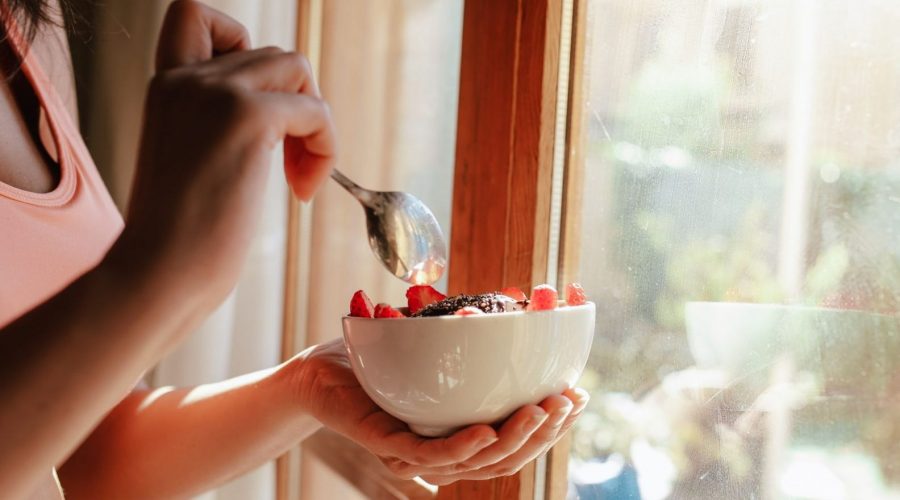7 professional yogis on what to eat before and after yoga for maximum energy
How should you eat to get the most out of your yoga sessions? We asked seven top yogis for their go-to snacks and meals that keep them strong on and off the mat.
We all know that fuelling our bodies with the right foods before and after exercise is crucial for optimal performance, energy levels and recovery. And while there’s a lot of advice out there about what you should eat if you strength train, run or swim, there’s not so much information about nutrition for yoga.
Do you need more protein if you’re doing yoga regularly? What makes a good post-workout meal? And what’s the deal with eating before a class – will it help or hinder? There are so many questions.
You may also like
“Does doing yoga actually improve your sleep?” A sleep expert answers your questions
Rhiannon Lambert, registered nutritionist and best-selling author of The Science Of Nutrition, confirms scientific research looking into nutrition for yoga is fairly limited. “Despite this, we do know that yoga is a form of low-intensity exercise so we can make an informed decision about how we fuel our bodies based on the recommendations we have for this,” she tells Stylist.
According to Lambert, light-intensity exercise like yoga requires around 2-3g of carbohydrates per kilo of body weight each day, while protein intake should be about 1.2-1.4g per kg on both training days and rest days.
“Because yoga is a lower intensity form of exercise, the main fuel your body uses as energy is fat,” explains Lambert. “Higher intensity workouts use carbohydrates as the main source of energy, so people who do the lower intensity exercise still need to consume carbohydrates but in smaller amounts compared to someone who does running or strength training.”
You may also like
Bikram yoga: medical experts say seriously hot yoga is a bad idea, but are they right?
If you choose to eat before your yoga session, she advises opting for something with an adequate amount of carbs to fuel your body. Think porridge topped with fresh fruit and yoghurt or a baked sweet potato with beans or tuna. If you’re practising in the morning, a snack of dried fruits, a cereal bar or a fruit smoothie will do the job. Your post-yoga meal, on the other hand, should be rich in carbohydrates and contain some lean protein to aid recovery.
What about timing when you eat around your yoga sessions? “Generally speaking, the standard advice is to eat between two and four hours before exercise to allow time for for food to digest, but it really depends on what your workout looks like,” says Lambert.
“It’s important to remember that nutrition isn’t one-size-fits-all. Ultimately, it’s about finding what works for you and your exercise habits,” she adds.
To gain a deeper insight into nutrition for yoga, we asked seven leading yoga teachers to share how, what and when they eat to get the most out of their sessions. Here’s what they told us.
SHONA VERTUE
Fitness trainer and yoga teacher Shona Vertue practises yoga on an empty stomach in line with traditional recommendations.
“Yoga asana (postures) aren’t just designed to stretch your limbs, they place quite an intense pressure on your digestive organs (think twists, forward folds and backbends),” she explains, “so practising on a full stomach would make it incredibly uncomfortable.”
If you feel as though you need some energy for your yoga session, however, she suggests eating something light like a banana or some roti one or two hours beforehand. “Any closer to your practice and it may come back up,” she warns.
Vertue points out that yoga is a contemplative, meditative movement practice, not a bodyweight movement class. “If you’re doing a session which focuses on turning yoga into an intense workout then it’s not so much yoga any more and in that case, you may want to be fuelled for this,” she says. “I’d still recommend keeping it light, as the asana will likely require that you get upside down or move into compressive twisted positions.”
Post-yoga, Vertue prioritises protein to keep her body satiated for longer. “Beans, tofu, tempeh, eggs, peas and spinach are good examples. A big salad that includes a mix of these things would be great.”
STEFFY WHITE
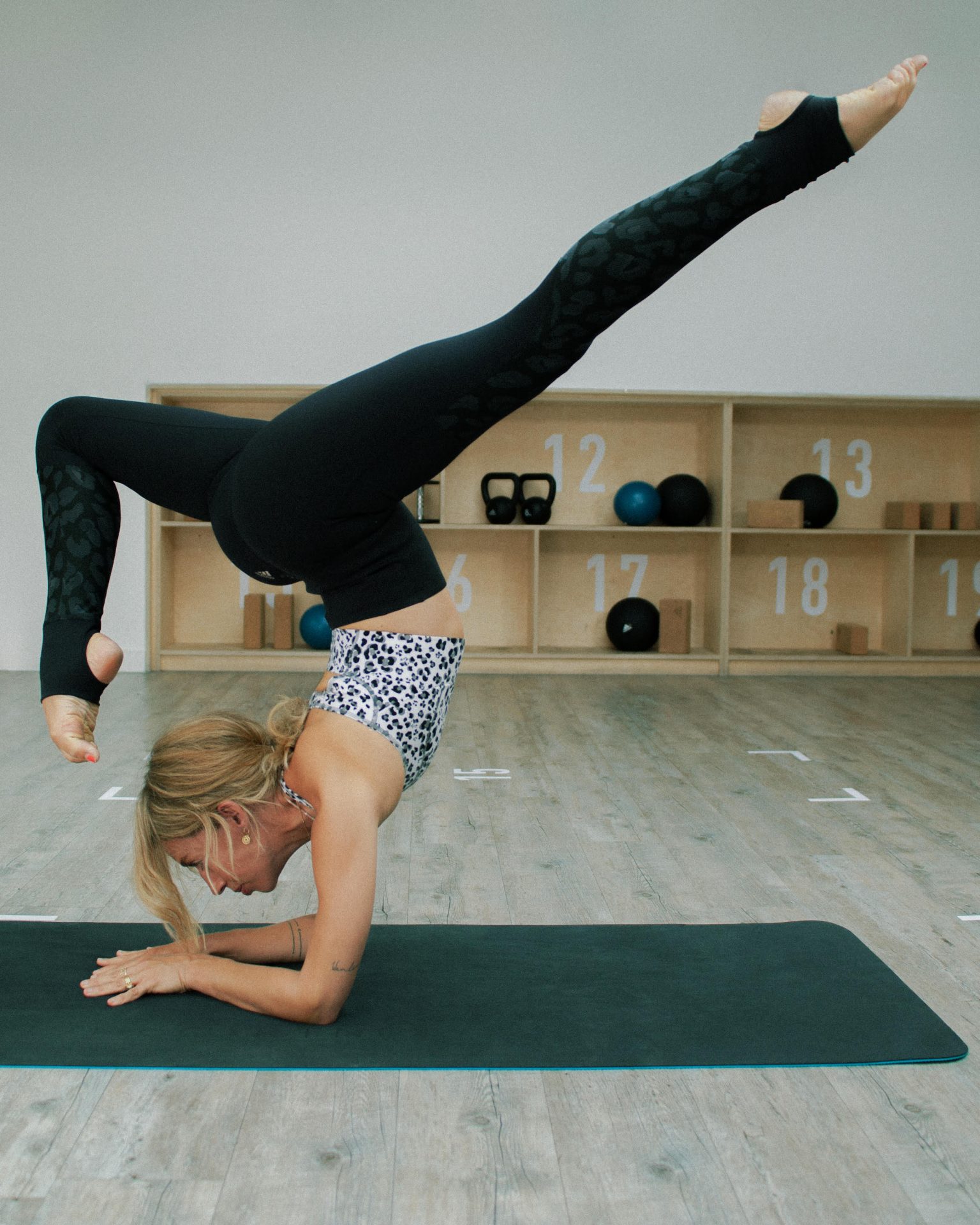
“I normally practise yoga first thing in the morning so I’d usually just have a herbal tea before I roll out my mat,” says yoga teacher Steffy White. Like Vertue, she says practising on a full stomach doesn’t make for a pleasant experience.
“If you did want something, a date with some nut butter or a handful of nuts would be a good option.”
You may also like
11 tips to make yoga feel easier and more enjoyable
For her post-yoga breakfast, White’s focus is on nourishing and replenishing her body as well as staying hydrated. She often opts for a dense, protein-packed seeded loaf with fresh tomatoes, avocado and micro herbs. “Or I might also have overnight oats made with hemp and chia seeds, and I usually have a green juice in the morning with breakfast.”
What does White eat for the rest of the day? “I make sure to eat well-balanced meals which include protein, whole grains and colourful veggies and I drink plenty of water,” she says. “I might have a falafel, beetroot, tahini and courgette salad for lunch and then a Thai red pepper and tofu curry with sticky rice for dinner.”
MADELEINE SHAW
“I think yoga is all about consciousness and being aware of your breath and your body,” says yoga teacher, nutritional therapist and author Madeleine Shaw. “For me, it’s about eating consciously, enjoying each bite and choosing food that intuitively feels good in the moment.”
When it comes to nutrition for yoga, Shaw believes it’s all about balance. “I like to divide my plate into quarters and have half veggies, a quarter quality protein (fish, eggs, tofu), a quarter slow-release carbs like sweet potato or brown rice, and a few tablespoons of healthy fats such as olive oil, seeds or avocado.”
Shaw generally avoids eating a few hours before a yoga session, but if she were to have a snack, it would be something like hummus and carrot sticks or a protein smoothie.
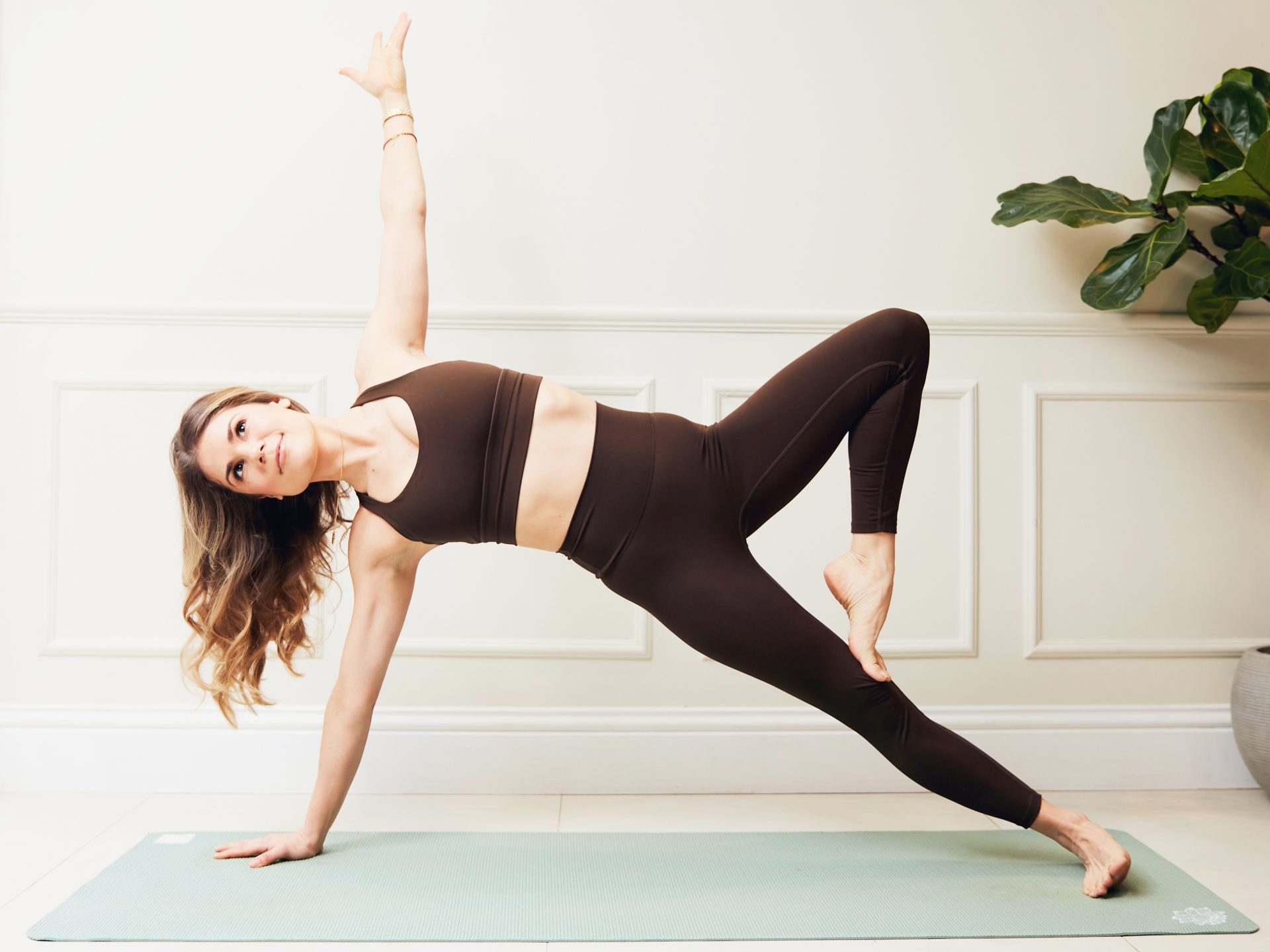
When’s the best time to eat after a yoga class? “I don’t think you necessarily need to eat anything straight after a yoga class,” says Shaw. “Make sure you hydrate after a long class and you could have a handful of nuts if it was a sweaty session, but otherwise I’d say just eat when your next meal is.”
Angie Tiwari
Yoga, meditation and pranayama guide Angie Tiwari believes what you should be eating depends on what type of yoga you’re doing. “If you start practising yoga poses that build strength and muscle like ashtanga, vinyasa or power, you’ll want to eat accordingly afterwards to refuel.”
Tiwari doesn’t eat if she’s practising first thing, but she says this is down to personal preference. “I practise asana on an empty stomach because that’s what suits me but it’s far more important that you listen to your body.”
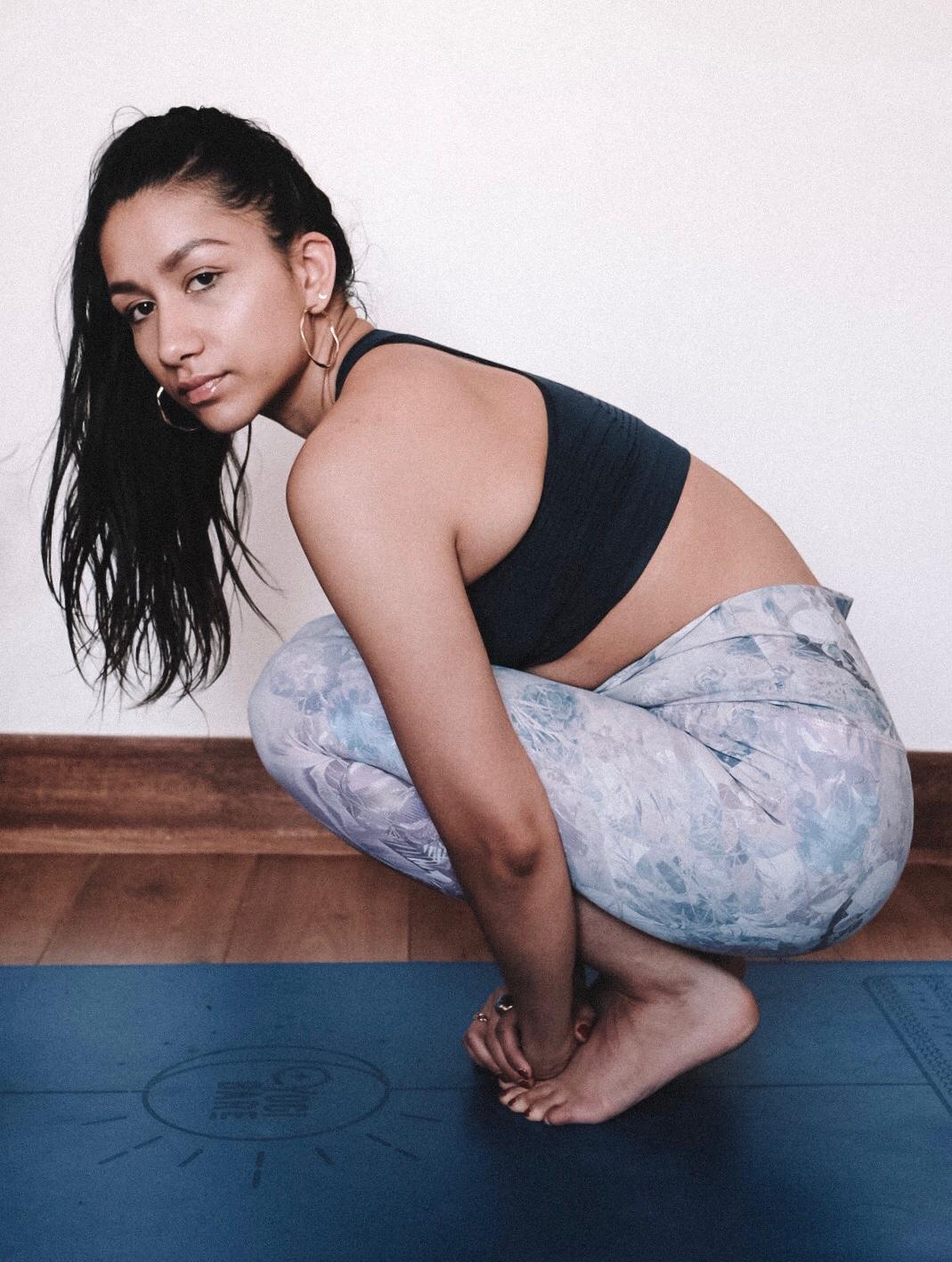
“If you’re hungry, eat a small snack beforehand, but do leave it at least 30 minutes before your yoga class and think about the poses you’re going to move through.”
Like Shaw, Tiwari’s approach to nutrition is intuitive. “After yoga asana practice, I’ll eat something nutritious that I enjoy but there are no set meals, I just see what I’m feeling at the time,” she explains. “My fiancé, who is an amazing cook, might rustle up something like a tofu noodle stir-fry or I might have something as simple as khichdi (rice and lentils).”
“From an Ayurvedic perspective, something grounding like khichdi is wonderful for balancing, detoxing and keeping us connected with the earth, which is a lovely feeling.”
Annie Clarke
Yoga teacher Annie Clarke says she doesn’t plan her meals around her yoga sessions. “My approach to wellbeing is more holistic so, for me, it’s about eating nutritious food to keep me energised throughout the day.”
Like the other yogis, Clarke avoids eating before an early morning practice. “Afterwards, I’ll usually make myself a smoothie and fill it with superfoods, plant protein, berries, banana and spinach,” she says. “If I practise mid-morning or mid-afternoon, I’ll wait for lunch or dinner to eat, or if I want a snack I might have an energy ball.”
Clarke enjoys tucking into buddha bowls filled with a mixture of plant protein, vegetables and carbohydrates, and she tries to include as much colour and variety into her meals as possible.
“I think it’s about learning what suits your body and adapting accordingly,” adds Clarke. “Some people work better exercising before breakfast while others feel like they need to eat before they can move their bodies.”
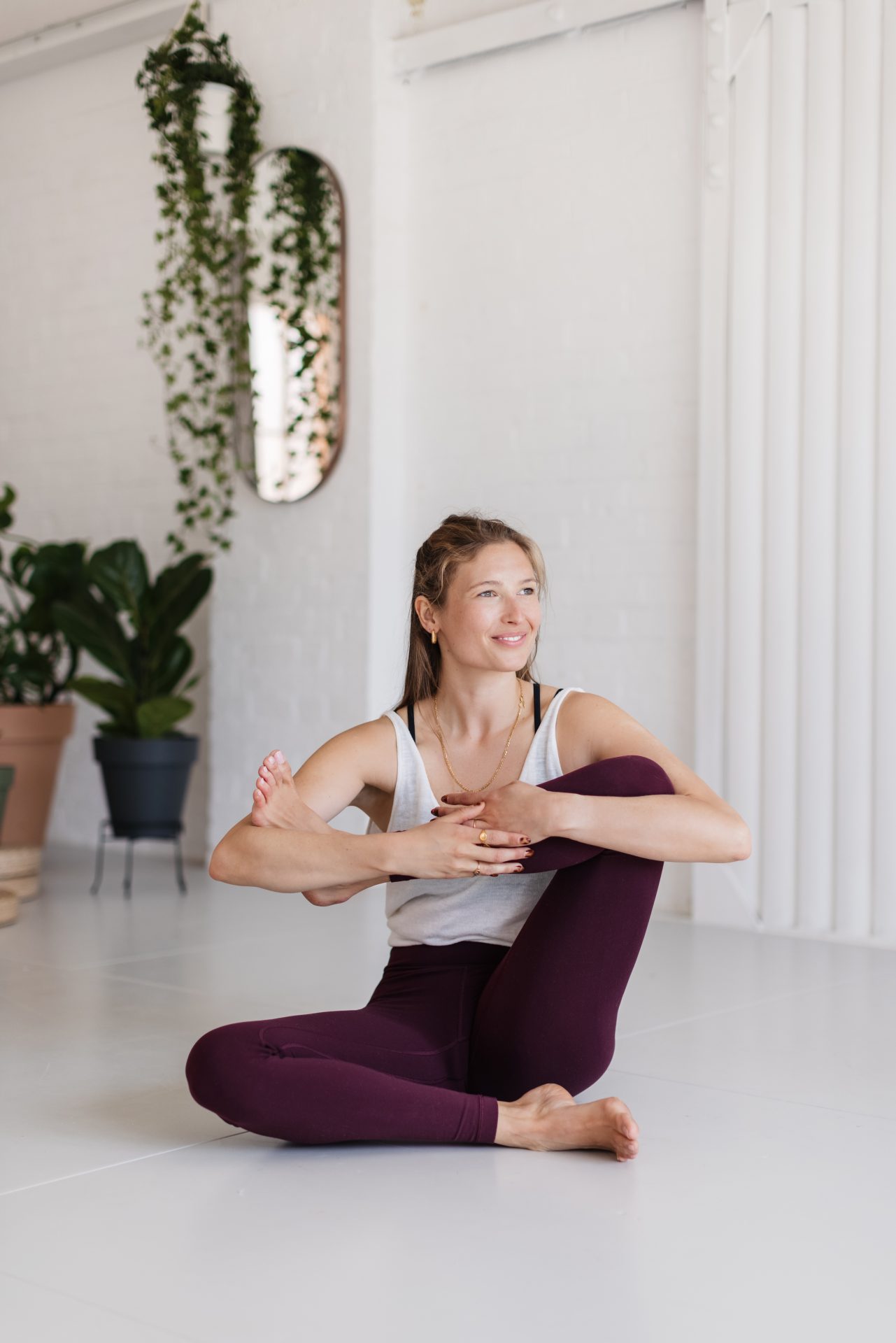
Donna Noble
“Before yoga, I’d eat something like a banana, an apple with peanut butter, an energy ball, avocado on toast, dried fruit and nuts or oatmeal,” says Donna Noble, yoga teacher and founder of Curvesome Yoga. “These are my go-to snacks because they provide me with plenty of energy and are easy to digest without feeling too full and uncomfortable during practice.”
Unlike the other yogis, Noble doesn’t change the type of food she eats before practising yoga. “The only thing I will do differently is to ensure I drink enough water if I’m doing a hot yoga class,” she tells us. “This is to make sure I remain hydrated as I’ll be sweating during the practice.”
“I pretty much eat as soon as I get home after a yoga class, and I just eat whatever I fancy, like a salad with chicken or salmon for example.”
SARAH HIGHFIELD
If Sarah Highfield, founder of Yogagise, decides to eat before a yoga session, she’ll keep her snack of choice small. “I might have a small bowl of natural yoghurt with honey as it’s energising but won’t make me feel bloated or lethargic, or I’ll have a banana with a handful of nuts as it’s a good mix of carbohydrates and fats to keep me invigorated.”

For dynamic styles of yoga like vinyasa flow or ashtanga, she keeps her snack particularly light, but if Highfield is practising a slower, more gentle style, she feels more comfortable eating something substantial. “If I’m not moving around as much, I can have a slightly larger snack as it won’t make me feel uncomfortable.
“Afterwards, I like to eat something nutritious, delicious and filling,” continues Highfield. “During the summer months it could be a big colourful salad bowl with different vegetables, healthy fats and a protein source, and during the winter I’ll eat roast veg with some form of protein on a bed of grains.”
Images: Getty; yoga teachers’ own
Source: Read Full Article
